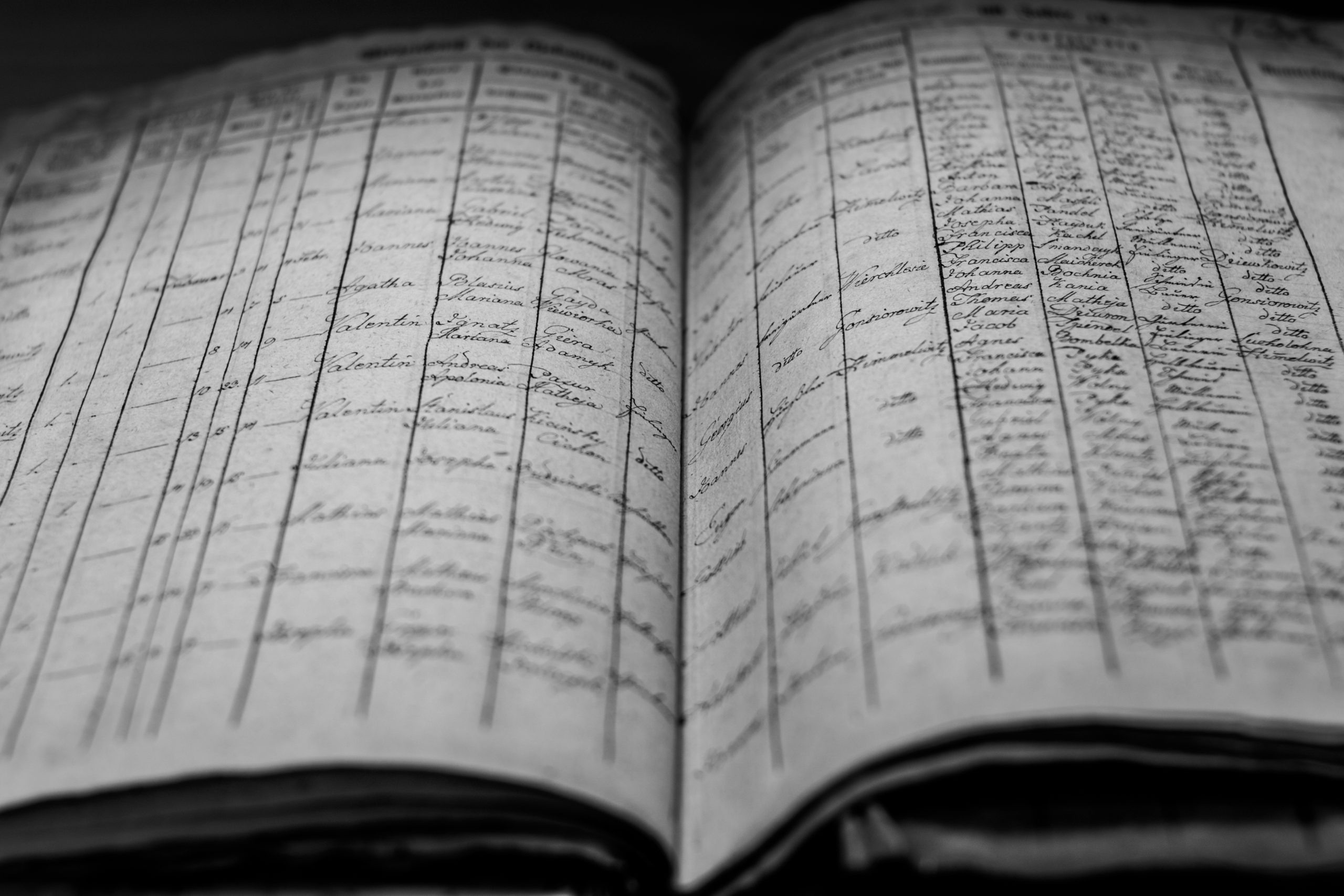Genealogy research using census records has long been one of the most valuable types of research in genealogy, but only if you know how to use them.
Every family historian, from seasoned professionals to genealogy rookies, learns the importance of adding census records to their research. In this week’s installment of SYFT’s “Beginner’s Guide to Genealogy,” we’ll dive back into how to use census records to your advantage. In this case, we will provide an overview of the best strategies to use when conducting research using Scotland census records. If you’re new to genealogy, be sure to check out our A Beginner’s Guide to England and Wales Census Record, our first guide detailing census records, where we help readers to understand census records as a whole and provide useful strategies related to using these census records..

Generic census register from Depositphotos.
HOW TO ACCESS SCOTLAND CENSUS RECORDS
The first thing anyone planning on using Scotland census records in their research needs to know is how to access them. The Scottish government has conducted a census each decade since 1801, with the exception of 1941 (due to the impact of WWII). Censuses conducted prior to 1841 were conducted only for statistical purposes. It wasn’t until the 1841 Scotland census, when these documents started listing valuable genealogical information. Census records are only made available to the public a century after the date they were originally conducted, with the 1921 census recently released. As of now, Scotland census records spanning from 1841 to 1921 are readily available for public use.
PRE-1841
Finding information prior to the 1841 census can be a little tricky; however, using Findmypast’s Scotland Pre-1841 Censuses and Population Lists, provides results of early Scotland census records and parish lists, This website is a great way to find any pre-1841 census data you’re researching.
1841-1921
The only website to house a complete collection of Scotland census records from 1841 to 1921 is ScotlandsPeople. Use the Online Census Indexes and Records table on the Scotland Census wiki found on FamilySearch to see the complete list of providers. Only on ScotlandsPeople will you be granted access to both the indexes and images pertaining to each census; the other sources listed only provide the indexes.
BEST STRATEGIES FOR SEARCHING CENSUS RECORDS
The key to truly getting the most out of your research using census records is to know the best ways to search them. Let’s explore some of the most important strategies to keep in mind when researching census records.
First, always begin by searching indexes. Using the indexes first saves time and often leads to further information. There are few sources that rival census records in their comprehensiveness and ease of usability, so it is no surprise that it is the first place most professional genealogists begin their research after they have determined their date of birth or death.
Once you start uncovering information, you’re most likely going to need a place to write it down. Using pen and blank pieces of paper can get messy quickly, so we recommend using the Census Forms on Ancestry to organize your information and prevent the hassle of trying to relocate a page number or a certain detail you forgot. These forms will also provide an overview of the format of each census record in addition to serving as a place to write down important information you come across. We also recommend writing in pencil, not pen, as you’re bound to need to erase at some point when doing your research.
Census records are only one source of information, and they may not always be perfectly accurate. With this in mind, details like a person’s age may need to be further validated through other sources such as birth, death, or even military records.
It is also worthwhile to keep in mind that names may not line up accordingly with names recorded through church or vital records. They may be spelled phonetically or just misspelled in general. The same goes for the names of places. A woman, particularly a widow, may be listed in the census under her maiden name.
If the family or an ancestor does not turn up at the expected address, then comb through the nearby area, searching pages before or after the address. You never know what you may find—it’s all part of the mystery at the end of the day. You may even find other relatives in that same area.
When you locate your family in one particular census, search both earlier and later censuses for as many family members as you can. You may even come across additional family members you didn’t even know you had. If you can’t find a missing family member or individual, it’s possible they’re listed somewhere else in the census, but locating them may be troublesome. Don’t forget to check the neighbors as well, searching the pages before or after the ancestor’s page. There’s a decent chance they could be related to your family.
While this is a rare occurrence, it is possible that there could be two entirely different families in the same proximity with the same name and similar information. This goes as a reminder to check the census carefully. It is a good strategy to be extra thorough in genealogy research.
ABOUT EACH CENSUS
Knowing what questions were asked in each census is beneficial when researching census records, especially when it comes to specific questions you may have about your ancestors. Now that you know how to access Scotland census records and the best strategies to employ when using census records in your research, let’s discuss what information can be found in each census, as well as any specific information pertaining to that year’s census.
1801 TO 1831
The Scottish government gathered only statistical information through these early censuses to provide an overview of the economy of the people. The data gathered included only the occupations, housing, and population for each individual parish in Scotland; however, some parishes were able to list names and acquire slightly more in-depth data when gathering required information for each census.
1841
The 1841 census was conducted on June 7 and is the first census to provide higher value genealogical information; however, the 1841 census doesn’t come without some limitations. The 1841 census did not list out relationships, marital statuses, or countries of birth, and ages in this census were also rounded down by a multiple of five for those over the age of fifteen.
As far as the information that can be discovered by researching the 1841 census, it lists each member of every household by:
- Name
- Sex
- Address
- Occupation
- Whether or not Scotland is their country of birth
- Ages; however census takers (enumerators) rounded the ages of those over fifteen down by a multiple of five (someone age thirty-nine would be listed in the 1841 census as thirty-five)
1851 AND ONWARDS
The 1851 and following censuses provide the most valuable genealogical data out of all the Scotland census records. They list more in-depth information about each member of the household, which makes it easier to locate your ancestors compared to the previous Scotland censuses.
Here’s a quick list of when each census was conducted:
- 1851: March 30
- 1861: April 7
- 1871: April 2
- 1881: April 3
- 1891: April 5
- 1901: March 30
- 1911: April 2
- 1921: June 19
- Information that can be found in each of these censuses about each member of the household include:
- Names
- Ages (unrounded)
- Occupations
- Relationship to the head of household
- Parish and county of birth, with the exception of foreign members. Their country of birth will be listed instead.
For a more-detailed list of exactly what questions were asked in each census, consult the Census Records research guides on the National Records of Scotland.
So there you have it, the complete Beginner’s Guide to using Scotland census records in genealogy. If there are any questions you have that we didn’t answer, or at any point you get stuck in your research (not just with Scotland census records), feel free to contact us here: Contact SYFT. We would love to help with whatever it is that’s halting your research.
Sources:
Image. Eilean Donan Castle, Scotland from Depositphotos.

